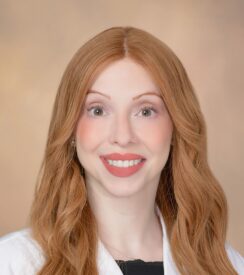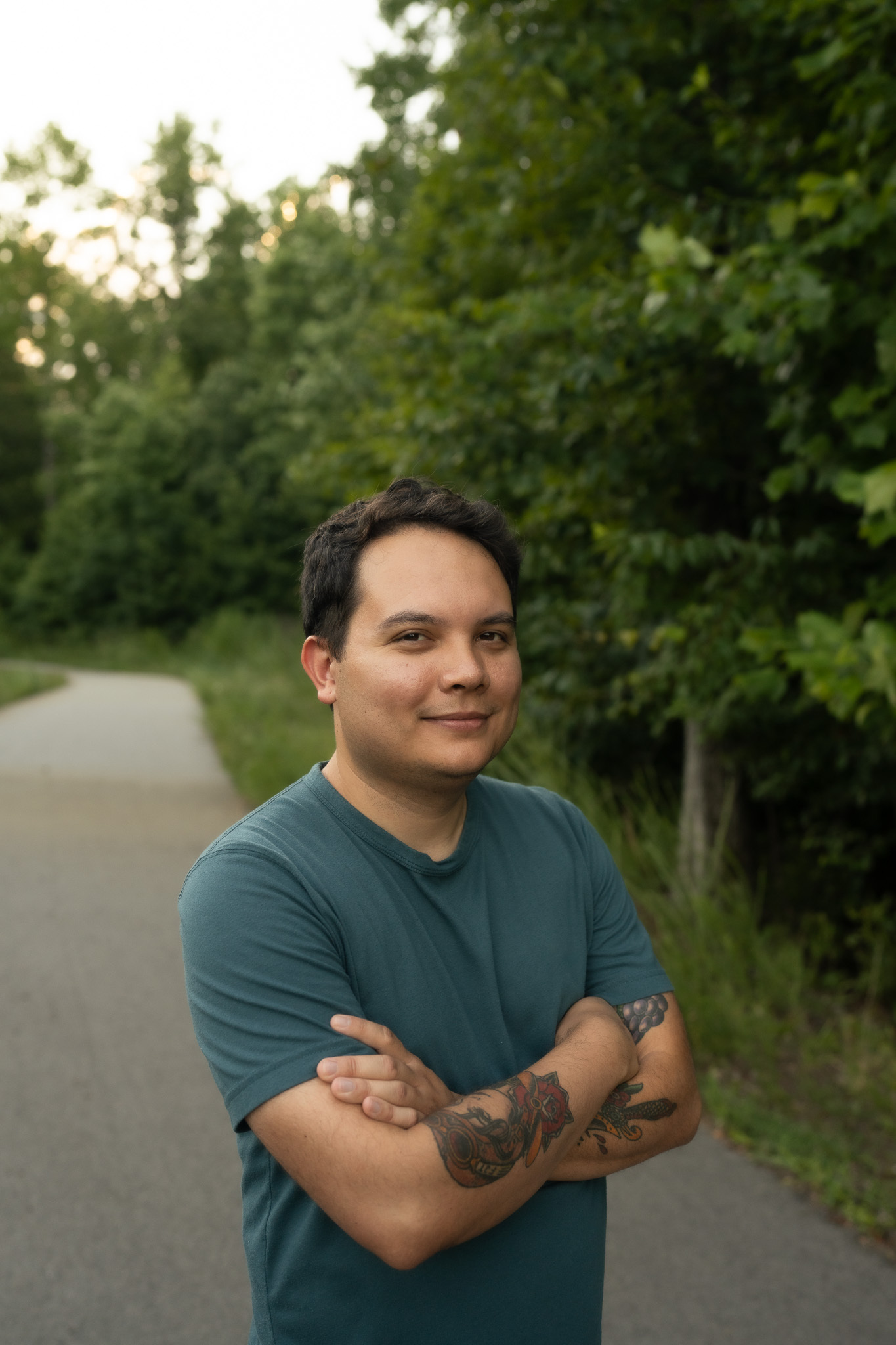Between 50 and 70 million people in the US have a sleep disorder that negatively impacts their daily lives. Though frustrating, sleep disorders like insomnia and sleep apnea are common all over the world. In many cases, sleep disorders can be successfully treated, improving the quality of sleep and reducing daytime sleepiness.
While reasons for poor sleep may be behavioral or related to lifestyle choices, others can be medical. Sleep disorders can prevent sleep or cause disordered sleep, which can have a detrimental effect on overall health.
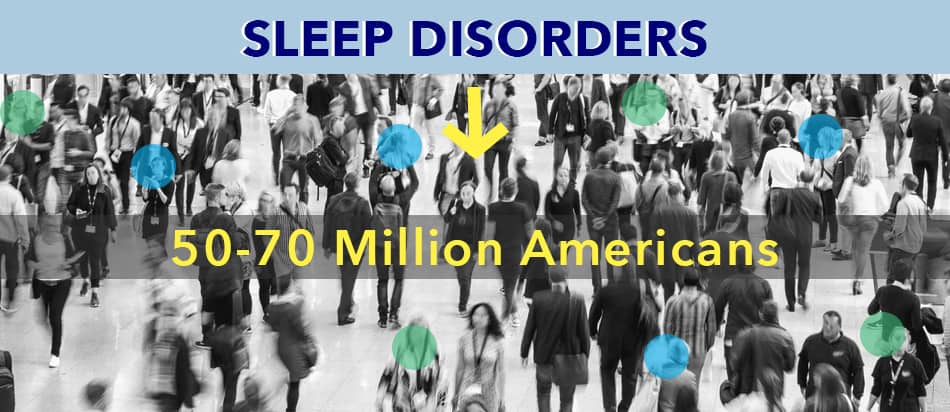
Note: The content on Sleepopolis is meant to be informative in nature, but it shouldn’t take the place of medical advice and supervision from a trained professional. If you feel you may be suffering from any sleep disorder or medical condition, please see your healthcare provider immediately.
Sleep Apnea
Sleep apnea is one of the most common sleep disorders and can affect both children and adults. (1) Sleep apnea is a pause in breathing during sleep. Breathing stops for at least 10 seconds and can stop 100 or more times every hour. A pause in breathing is referred to as an apnea. Each apnea must last at least 10 seconds to have an impact on the oxygenation of the blood.
To be considered sleep apnea, pauses in breathing must occur at least five times each hour. The disorder is categorized as mild, moderate, or severe depending on the frequency and length of pauses in breathing.
Symptoms of Sleep Apnea
Consistent snoring is the most common symptom of sleep apnea. Though snoring is often dismissed as a natural part of sleeping, it indicates a structural or cognitive problem that may result in serious health consequences.
In addition to snoring, there are numerous other symptoms of sleep apnea. These include:
- Gasping, choking, or feeling short of breath during sleep
- Daytime sleepiness
- Waking with a dry throat or mouth
- Feeling restless during sleep
- Frequent waking at night, including visits to the bathroom
- Headaches on waking
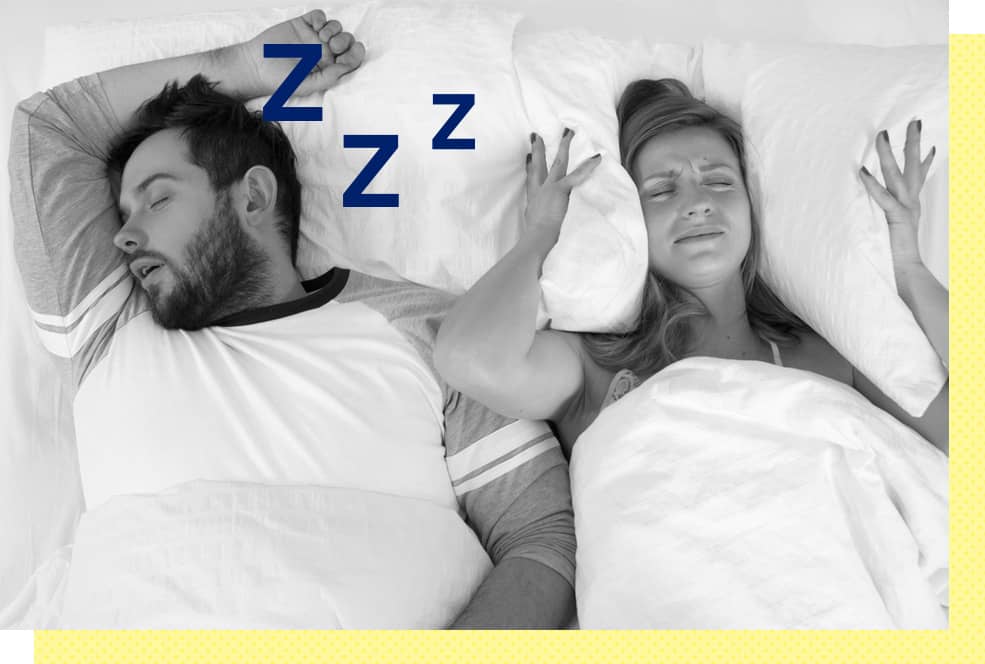
Other less common symptoms of sleep apnea include acid reflux that occurs overnight, feeling hot, or perspiring excessively during sleep. In addition to symptoms directly related to apnea events, the disorder can cause the full range of sleep debt symptoms, which include:
- An increased risk of accidents, injuries, and falling asleep while driving
- Metabolic dysfunction
- Stroke (2)
- Heart attack
- Obesity
Types of Sleep Apnea
There are two main types of sleep apnea. The third type of sleep apnea is a combination of the two main types.
Obstructive sleep apnea. Obstructive sleep apnea, or OSA, happens when the tongue or airway muscles block the throat. (3) OSA is the most common form of sleep apnea, and affects 100 million people worldwide. The risk of OSA goes up if you’re over 50, smoke, or have high blood pressure. You’re more likely to have sleep apnea if your neck circumference is over 15.75 inches especially if your BMI is high.
Enlarged tonsils and nasal congestion can also block the airway, and a small jaw can cause the tongue to drop into the throat during sleep. Lying on your back can cause OSA or make it worse.
Central sleep apnea. Central sleep apnea involves a failure of the brain to send the right signals to the muscles that control breathing. (4) This can be caused by medication, high altitude, or conditions like heart failure or stroke. It can also be caused by using a CPAP machine, which treats sleep apnea by blowing air into the lungs. This is called treatment-emergent central sleep apnea.
Complex sleep apnea. Complex sleep apnea can result from congestive heart failure, medical conditions like kidney disease, or certain drugs. Narcotic pain medication can stop the brain from sending out the right breathing signals and cause obstructive sleep apnea by relaxing the tongue and palate muscles.
FAQ
Q: Can children suffer from sleep apnea? A: Yes. Allergies, facial structure, and high BMI can cause sleep apnea in children. Between 1-4% of children suffer from OSA.Causes of Sleep Apnea
There are numerous causes of sleep apnea, including:
- Certain medications, especially narcotics
- High body mass index
- Stroke
- Physical disorders such as kidney disease and heart failure
- Throat or nasal tissues that block the upper airway and deprive the brain of adequate oxygen
Diagnosing Sleep Apnea
There are no sleep apnea tests that take the place of a sleep study. Both home and laboratory sleep studies measure the apnea-hypopnea index, or AHI. An AHI of 5 or above is indicative of sleep apnea. Because sleep apnea may be worse or better depending on body position, home and lab sleep studies measure AHI while the body is in various positions during sleep.
The AHI score determines the degree of sleep apnea, and is categorized as follows:
- Mild sleep apnea – 5–14.9
- Moderate sleep apnea – AHI 15–29.9
- Severe sleep apnea – AHI ≥30
As demand for diagnosis of sleep apnea and other sleep disorders has grown, the need for a more convenient and cost-effective method of diagnosis has increased, as well. (5) The use of home sleep studies is becoming more common, and is more accepted by physicians as an alternative means of diagnosis.
Treatment of Sleep Apnea
The effects of sleep apnea can be reduced or eliminated by proper treatment. If sleep apnea goes untreated, patients may experience persistent or develop chronic fatigue due to repeated nighttime awakenings and fragmented sleep. Untreated sleep apnea also increases the risk of obesity, high blood pressure, heart disease, and stroke.
Treatment of sleep apnea includes a CPAP, or continuous positive airway pressure machine, which keeps air passages clear by pumping air into the airway during sleep. (6) The machine is attached to a mask that is worn over the face. Oral devices fitted by a dentist may be an option for mild to moderate sleep apnea, while surgery may be suggested for patients who can’t tolerate other treatments.
Treatment for central sleep apnea can differ from treatment for obstructive sleep apnea, and includes:
- Management of underlying medical conditions
- Stopping medications that may be contributing to the disorder
- Use of a CPAP machine
Insomnia
Insomnia is the inability to fall asleep, stay asleep, fall back to sleep, or all three. Insomnia is the world’s most common sleep disorder. One in four American adults will suffer from insomnia this year, and 10 percent of those will experience chronic insomnia.
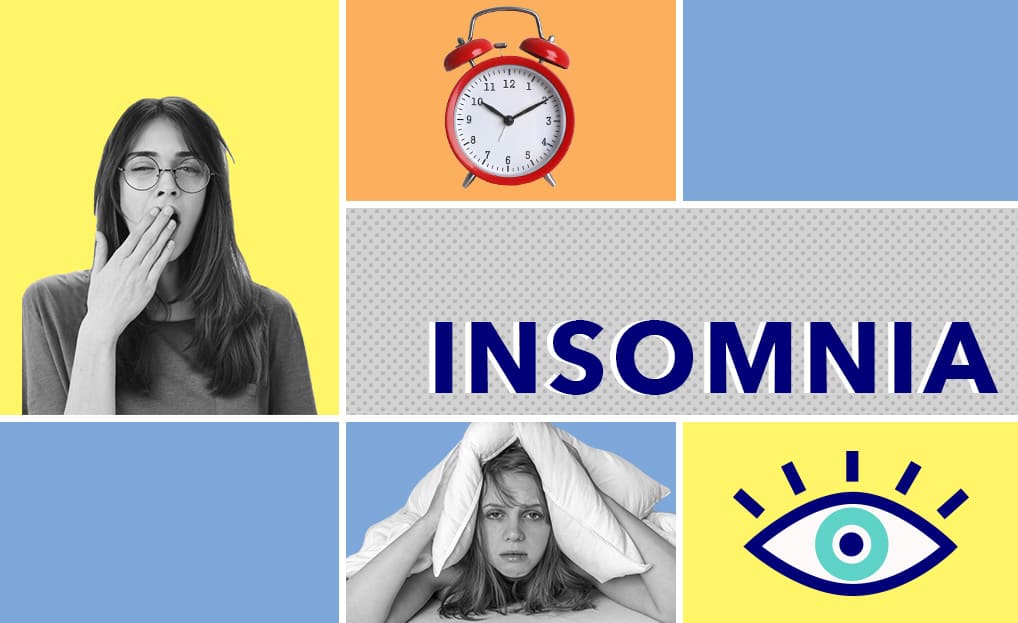
There are two primary types of insomnia: transient acute and chronic, also known as insomnia disorder. Transient acute insomnia lasts less than three months and typically resolves on its own without professional treatment. Chronic insomnia last three months or longer and occurs at least three days each week.
Insomnia Symptoms and Effects
The main symptom of insomnia is the inability to sleep, but the effects are varied and far-reaching. (7) Insomnia can cause daytime sleepiness, irritability, and metabolic changes that lead to obesity, as well as the following:
- A feeling of grogginess after waking
- Anxiety or depression
- Difficulty concentrating
- Trouble retaining new information
- Reduced coordination
Insomnia can also increase the risk of errors and accidents at home or on the job, and may be associated with an increased risk of car accidents. Lack of sufficient sleep can affect work performance and make engaging in relationships and social activities more difficult.
Insomnia Causes
Causes of the disorder depend on the type of insomnia. Transient acute insomnia is usually associated with a short-term stressor or change in life circumstances, which can be positive or negative. These types of changes include:
- A birth or death
- A move
- Starting a new job or school
- Anxiety
- A divorce or marriage
- Grief
- Depression
Whereas the triggers of transient insomnia are numerous, chronic insomnia usually has a single cause: negative associations with the bed and sleep. (8) Other causes of chronic insomnia include clinical depression and head injuries.
FAQ
Q: What other mental health issues cause insomnia? A: Nearly any mood disorder or mental illness can cause or exacerbate insomnia, including bipolar disorder, schizophrenia, and personality disorders. Insomnia may also cause depression and other psychological conditions.Diagnosing Insomnia
A diagnosis of insomnia can usually be made by simple self-reporting of symptoms by a patient. Because people undergoing sleep studies often sleep less than they would in their usual environment, such studies are rarely helpful for diagnosing insomnia disorder.
In addition to information about your symptoms, a doctor may:
- Ask about your sleep habits and social environment
- Suggest you keep a sleep diary to track your sleep patterns and identify factors that might contribute to your insomnia issues
- Ask that you take one or several insomnia tests to better understand your sleep habits. These might include questionnaires such as the Insomnia Severity Index or a mental health examination
Insomnia Severity Index
A list of seven questions related to falling asleep, staying asleep, and falling back to sleep.
Insomnia Treatment
Transient insomnia usually resolves on its own in days or weeks, and does not require treatment. Sleep medications may be used on a short-term basis to promote sleep, and may be helpful during temporary periods of emotional stress.
The first-line treatment for insomnia is Cognitive Behavioral Therapy for Insomnia, or CBT-I. This non-drug protocol is usually conducted by a trained psychologist, and takes several sessions to complete. The protocol includes:
- Sleep restriction. Sleep restriction involves limiting time in bed to the amount of hours usually spent sleeping. The goal of this treatment is to increase sleep efficiency and gradually add time in bed until a full night’s sleep is achieved (9)
- Stimulus control. Stimulus control helps recondition the mind and body to associate the bed with sleep. Stimulus control requires using the bed for sleep and sex only, going to bed and waking up at the same time every night, not napping, not looking at the clock after going to bed, and not getting into bed until sleepy
- Relaxation training. The goal of relaxation training is to help insomnia sufferers reduce anxiety by deactivating the nervous system. Inappropriate arousal of the nervous system can cause the release of stress hormones such as cortisol and adrenaline, and cause or worsen insomnia.
Studies show that CBT-I can be 80 percent effective in improving chronic insomnia, and is helpful even when insomnia is caused by depression or chronic pain. (10)
Narcolepsy
Narcolepsy is both a sleep disorder and neurological disorder. Recent scientific research shows that narcolepsy is an auto-immune disease, and is typically triggered by a virus in childhood or adolescence. (11) The body attacks its own stores of hypocretin, a neurotransmitter that helps to regulate the sleep and wake system.
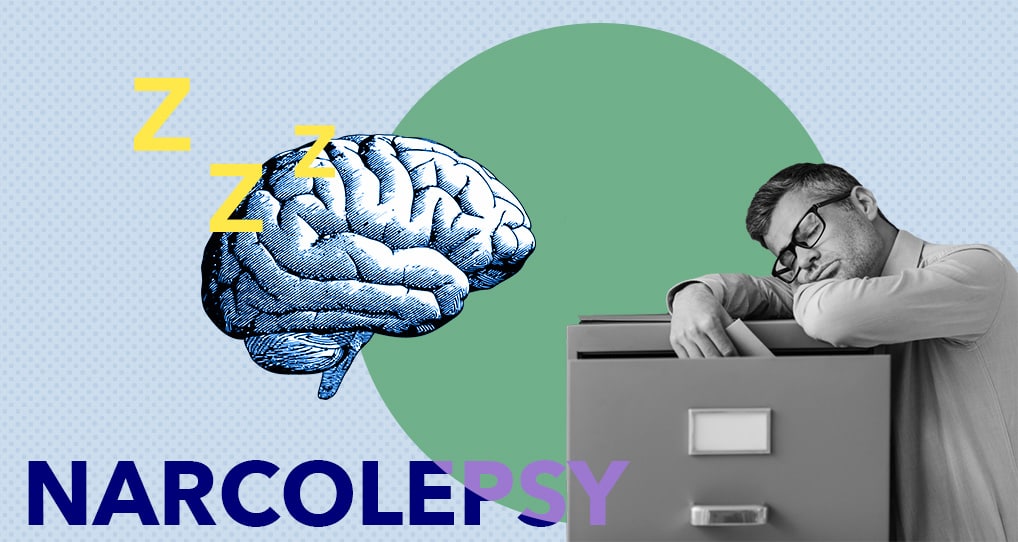
Symptoms of Narcolepsy
Symptoms of narcolepsy include excessive daytime sleepiness and “sleep attacks,” which can cause the sufferer to fall asleep spontaneously. When nighttime sleep occurs, it’s often fragmented or inefficient. Although a person suffering from narcolepsy may get the same amount of sleep or more than someone without it, sleep can occur at random times and for short periods. This can result in extreme fatigue, greater risk of microsleep episodes, and a higher likelihood of falling asleep while driving.
Other signs and symptoms of narcolepsy include:
- Cataplexy, a sudden loss of muscular control brought on by emotion or laughter
- Sleep paralysis
- Hallucinations while falling asleep or waking up, known as hypnagogic and hypnopompic hallucinations
Narcolepsy Causes
Research shows that narcolepsy — once a mystery with no clear cause — usually begins after a viral infection or other immune injury. The immune system confuses a portion of the flu or other virus with hypocretin, destroying this essential neurotransmitter and causing dysfunctional sleep and wake cycles.
Because the immune system of children and adolescents is more vulnerable to pathogens than that of adults. narcolepsy tends to begin at a relatively young age.
FAQ
Q: What causes cataplexy? A: A sudden episode of muscle paralysis usually seen only during REM sleep. Narcolepsy can weaken the boundaries between sleep and wake states, making muscle paralysis possible during wakefulness.Diagnosing Narcolepsy
A diagnosis of narcolepsy typically requires a medical and family history, overnight laboratory sleep study, and/or Multiple Sleep Latency Test. This test measures a patient’s brain waves, muscle activity, and eye movements during a series of naps. The results can determine whether sleep patterns are normal or dysfunctional, and help determine whether a patient is suffering from ordinary fatigue or a sleep disorder.
Narcolepsy Treatment
Narcolepsy treatments include medications such as:
- Stimulants. Newer stimulant medications can improve the symptoms of daytime sleepiness with fewer side effects than older stimulants. Stimulants used for narcolepsy include Provigil, Nuvigil, Ritalin, and Concerta (12)
- Sodium oxybate. Sodium oxybate helps to improve nighttime sleep and reduce symptoms of cataplexy. Alcohol and narcotic pain relievers must be avoided while taking this medication.
- Selective serotonin reuptake inhibitors and norepinephrine reuptake inhibitors. These medications suppress REM sleep and can help alleviate sleep paralysis, hallucinations, and cataplexy.
- Tricyclic antidepressants. These medications can be helpful for cataplexy, but may cause unwanted side effects such as dry mouth.
People with narcolepsy are often advised to avoid medications that can increase drowsiness, such as antihistamines, cold medicines, and sleep medications.
Restless Legs Syndrome
Restless legs syndrome, or RLS, is a sensory and motor disorder that can impact a person’s ability to fall asleep, stay asleep, or remain still for extended periods of time. Also known as Willis-Ekbom Disease, Restless Legs Syndrome is considered both a neurological disorder and a sleep disorder.
RLS affects approximately 8 percent of the population in the United States, though this number may be low due to under-diagnosis. The disorder is not fatal, but can have a profound effect on sleep, health, and quality of life. (13)
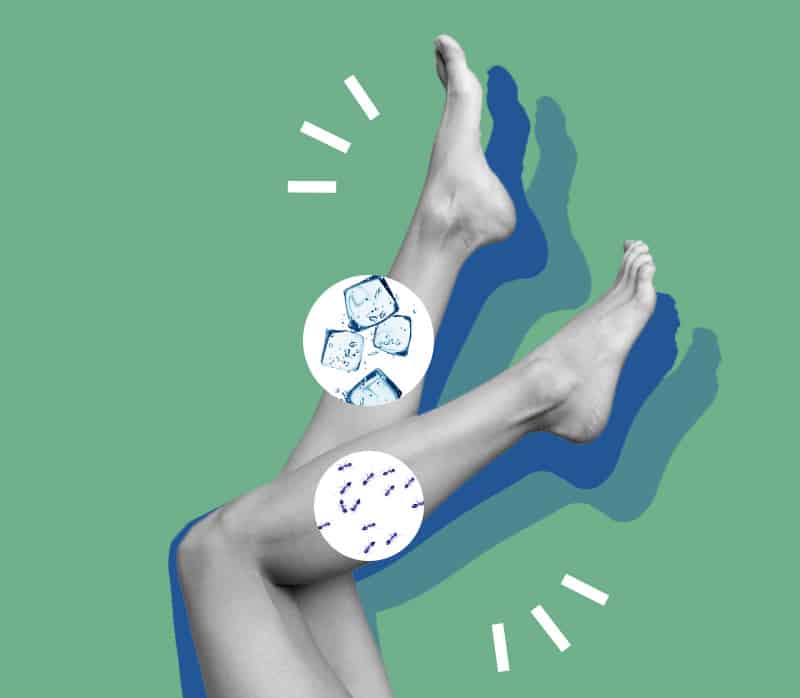
Symptoms of RLS
Restless legs syndrome causes uncomfortable sensations in the limbs, as well as an urge to move to gain relief from those sensations. The sensations may be described as:
- Itchy
- Throbbing
- Achy
- Crawling
- Pulling
- Similar to pins and needles or electric shocks
The sensations may occur on one or both sides of the body, or alternate between the two sides. Less commonly, the discomfort can occur in the feet, arms, chest, or head.
Other RLS symptoms include:
- A powerful urge to move the legs in an effort to reduce the uncomfortable sensations associated with the disorder
- Temporary relief of symptoms after moving or stretching the limbs
- Worsening of sensations in the evening and when the afflicted person is lying or sitting for extended periods of time
Causes of RLS
Though the exact mechanism behind RLS is unclear, it appears to be caused by a combination of genetic and environmental factors. These include:
- Dopamine dysfunction. (14) There is strong evidence that RLS may result from an imbalance of dopamine, a brain chemical involved in regulating muscle movement as well as reward, attention, and memory.
- Iron deficiency. Levels of iron in the blood of RLS patients frequently appear normal, but are insufficient in the brain. Any condition that lowers available iron in the body increases the risk of RLS.
- Genetics. As many as 50 percent of people who suffer from primary Restless Legs Syndrome have a family member with the condition. This supports the theory that genes play a prominent role in the development of the disorder.
- Nighttime worsening of RLS symptoms may suggest a connection to the release of melatonin, a hormone released by the pineal gland in the brain in preparation for sleep.
RLS symptoms may be triggered or worsened by certain drugs and conditions, including:
- Some antidepressants, anti-nausea drugs, antipsychotic drugs, calcium channel blockers, and cold and allergy medications containing antihistamines, which may block the brain’s dopamine receptors.
- Vitamin or mineral deficiencies. Magnesium and vitamin B-12 deficiency may have a link to the condition.
- Pregnancy. Some women experience symptoms of Restless Legs Syndrome during pregnancy, particularly during the last trimester. If RLS is triggered by pregnancy, most women will experience relief from symptoms within a month of delivery. (15)
- Sleep deprivation. RLS may cause sleep deprivation, and sleep deprivation may in turn provoke symptoms of RLS.
- Alcohol, caffeine, and/or nicotine
In addition to medications and genetic and environmental factors, serious medical disorders may worsen or trigger RLS. Genetics may also be implicated in the connection between RLS and certain medical conditions, including:
- Diabetes
- End-stage renal disease
- Lyme disease
- Stroke
- Multiple sclerosis (MS)
- Parkinson’s Disease
- Rheumatoid arthritis
- Narcolepsy
When RLS is associated with narcolepsy, the cause is less likely to be genetic. Symptoms of RLS tend to appear approximately ten years after narcolepsy diagnosis.
Renal disease
A disease relating to the kidneys.
Diagnosis of RLS
There is currently no specific medical test for RLS. Because diagnosis depends in part on a patient’s reporting of symptoms, RLS may frequently be under-diagnosed. A clinical diagnosis of Restless Legs Syndrome requires that all of the following criteria be met:
- Uncomfortable sensations in the limbs, along with a strong impulse to move the legs
- Restlessness that results in such activities as pacing, massaging the limbs, or tossing and turning in bed
- Symptoms occur or worsen while at rest and are relieved by activity
- Symptoms increase in number and severity in the evening and at night
During an evaluation of RLS symptoms, a doctor may ask about family and medical history, other medical conditions, daytime sleepiness, and medication use. A sleep study may be ordered, as well as a blood test to check levels of iron in the blood.
A doctor will not diagnose RLS if sensory symptoms and restlessness begin while walking. Symptoms of the disorder must begin at rest to qualify as Restless Legs Syndrome.
Treatment of RLS
Treatment options for RLS include natural remedies, medications, and lifestyle modifications. Some treatments may not eliminate RLS symptoms, but help to ease their severity and facilitate better sleep.
Moderate RLS symptoms may be reduced by making certain lifestyle changes, such as:
- Adopting a moderate exercise program
- Creating a consistent sleep schedule, and going to bed and waking up at the same time every day
- Maintaining a healthy weight
- Avoiding the use of alcohol, caffeine, and nicotine
- Staying hydrated and eating a nutritious diet
- Utilizing treatment devices such as a foot wrap, pneumatic compression, or vibrating pad designed for RLS sufferers
Other natural treatments include massaging the legs and applying heating pads or ice packs to the affected areas of the body. Some people with RLS may be helped by calcium and magnesium supplements, which affect the contraction and relaxation of muscle fibers.
Because even low doses of vitamins and minerals may interfere with the absorption of other elements in the body and cause toxicity, a medical professional should be consulted before beginning any treatment program.
FAQ
Q: Is remission possible in RLS? A: Yes. Symptoms can disappear for days, weeks, or months at a time, but usually recur.Medications
If lifestyle changes and natural treatments are ineffective or RLS symptoms are severe, a doctor may prescribe one or more medications or minerals to treat the condition. Treatment options include:
- Dopamine-enhancing drugs such as levodopa. These drugs influence dopamine levels in the brain, and are a common treatment for conditions such as Parkinson’s Disease. While often effective, treatment of RLS with levodopa and similar drugs may lead to what’s termed “augmentation,” or a rebound effect resulting in increased symptoms.
- Intravenous iron supplementation. Iron treatment can be remarkably effective in RLS, with some studies showing that symptoms resolved completely in about 20% of patients
- Anticonvulsants or antiseizure drugs. These may make the restlessness of RLS more bearable and help ease uncomfortable sensations in the legs.
- Sleep medications and/or muscle relaxants. These may help people with RLS sleep better at night.
- Drugs that influence calcium levels. While not totally clear why, these types of medications may improve RLS symptoms in some people.
- Narcotic pain relievers, also known as opioids. Low doses of opioids can help relieve RLS symptoms that manifest as discomfort in the legs. The risk of tolerance to opioids in RLS sufferers may be lower than in patients with other chronic pain syndromes that require higher medication dosages.
A medication that alleviates symptoms in one RLS sufferer may exacerbate symptoms in another. One drug may help initially before gradually decreasing in effectiveness. There is a risk of side effects with any medication, as well as a possibility of dependence and tolerance with sleep medications, opioids, and muscle relaxants.
Since the diagnostic criteria for Restless Legs Syndrome was established in 1995, the disorder has been studied extensively. The exact cause of the condition remains unclear, but there is no longer debate about RSL as a real disorder.
Though RSL still has no cure, recent advances have resulted in more targeted directions for research. Some scientists theorize that iron insufficiency combined with genetics might “switch on” the disorder, which continues even after blood levels of iron return to normal. (16) In fact, we may discover that genetics alone cause RSL in relatively few people.
Future research may target iron regulation in the brain, as well as environmental stressors that contribute to the development of RLS. (17) This could allow researchers to prevent the development of the condition, or treat it more effectively. Whether RSL begins during pregnancy, childhood, or later in life, a better understanding of the disorder may lead to more customized and effective treatment options.
Last Word From Sleepopolis
Sleep apnea, insomnia, restless legs syndrome, and narcolepsy affect millions of people worldwide. All can impact quality of life and cause numerous serious side effects, from irritability to increased risk of cardiovascular disease and dementia.
Many sleep disorders go underdiagnosed. Though common, sleep disorders can be treated effectively using non-drug therapies, specially designed devices, or medications. Because sleep disorders can have such-ranging impact on emotional and physical well-being, diagnosis and treatment are crucial to optimal health.
References
- Motamedi KK, McClary AC, Amedee RG., Obstructive Sleep Apnea: A Growing Problem, The Ochsner Journal, Fall 2009
- Beaudin AE, Waltz X, Hanly PJ, Poulin MJ., Impact of obstructive sleep apnoea and intermittent hypoxia on cardiovascular and cerebrovascular regulation, Experimental Physiology, July 1, 2017
- Osman AM, Carter SG, Carberry JC, Eckert DJ, Obstructive sleep apnea: current perspectives, Nature and Science of Sleep, Jan.23, 2018
- Muza RT., Central sleep apnoea—a clinical review, Journal of Thoracic Disease, May 7, 2015
- El Shayeb M, Topfer LA, Stafinski T, Pawluk L, Menon D., Diagnostic accuracy of level 3 portable sleep tests versus level 1 polysomnography for sleep-disordered breathing: a systematic review and meta-analysis, Canadian Medical Association Journal, Jan. 7, 2014
- Dernaika TA, Kinasewitz GT, Tawk MM., Effects of Nocturnal Continuous Positive Airway Pressure Therapy in Patients with Resistant Hypertension and Obstructive Sleep Apnea, Journal of Clinical Sleep Medicine, Apr. 15, 2009
- Y. Ustinov, Association Between Report of Insomnia and Daytime Functioning, Sleep Medicine, January 11, 2010
- Sharon Schutte-Rodin, M.D., Lauren Broch, Ph.D, Clinical Guideline for the Evaluation and Management of Chronic Insomnia in Adults, Journal of Clinical Sleep Medicine – Research & Review Articles in Sleep Medicine, July 2008
- Miller CB, Espie CA, Epstein DR, Friedman L, Morin CM, Pigeon WR, Spielman AJ, Kyle SD., The evidence base of sleep restriction therapy for treating insomnia disorder, Sleep Medicine Reviews, Oct. 2014
- Edinger JD, Wohlgemuth WK, Radtke RA, Marsh GR, Quillian RE., Cognitive behavioral therapy for treatment of chronic primary insomnia: a randomized controlled trial, JAMA, Apr.11, 2001
- Natasja Wulff Pedersen, Anja Holm, Nikolaj Pagh Kristensen, Anne-Mette Bjerregaard, Amalie Kai Bentzen, Andrea Marion Marquard, Tripti Tamhane, Kristoffer Sølvsten Burgdorf, Henrik Ullum, Poul Jennum, Stine Knudsen, Sine Reker Hadrup, Birgitte Rahbek Kornum, CD8 T cells from patients with narcolepsy and healthy controls recognize hypocretin neuron-specific antigens. Nature Communications, 2019
- Bhattarai J, Sumerall S., Current and Future Treatment Options for Narcolepsy: A Review, Sleep Science, Jan-Mar. 2017
- MV Svetel, Quality of Life in Patients with Primary Restless Legs Syndrome: Community-based Study, National Center for Biotechnology Information, Aug. 2010
- Ulrike Mitchell, Peripheral Dopamine in Restless Legs Syndrome, Frontiers in Neurology, Mar. 15, 2018
- A. Neyal, A Prospective Study of Willis-Ekbom Disease/Restless Legs Syndrome During and After Pregnancy, Sleep Medicine, Sep. 15, 2016
- V. Dhawan, Genetic Aspects of Restless Legs Syndrome, Postgraduate Medical Journal, Aug. 2006
- R. Nisha Aurora, The Treatment of Restless Legs Syndrome and Periodic Limb Movement Disorder in Adults—An Update for 2012: Practice Parameters with an Evidence-Based Systematic Review and Meta-Analyses, Sleep, Aug.1, 2012





























